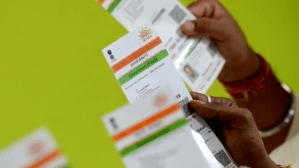
Aadhaar Card
Aadhaar Card acts as a universal identity document of the residents of India. Essentially, it is a unique identification document issued by the Unique Identification Authority of India (UIDAI). It contains a 12-digit unique identification number known as the Aadhaar number, along with the holder’s demographic and biometric information.
For security measures, the system is based on biometric authentication (fingerprint and iris scans). According to the authorities, the bio authentication further helps in minimizing the risk of identity fraud. Despite concerns about privacy and data security, Aadhaar has gradually become an integral part of India’s digital infra.
The Aadhaar Card also facilitates access to various government and private sector services across the country. The identification document is commonly used for opening bank accounts, obtaining mobile connections, receiving government subsidies and participating in welfare schemes, among other things.
Key Points about Aadhaar:
- Unique Identification Number: Each Aadhaar number is unique and is assigned to every resident of India, regardless of age or citizenship. It is based on demographic and biometric information.
- Biometric and Demographic Data: Aadhaar captures an individual’s biometric data, including fingerprints and iris scans, as well as demographic information such as name, date of birth, gender, and address.
- Aadhaar Enrollment: Aadhaar enrollment is a voluntary process. Individuals can visit Aadhaar enrollment centers to provide their biometric and demographic details for Aadhaar registration.
- Linking Aadhaar: The Indian government has mandated the linking of Aadhaar with various services and documents, including bank accounts, mobile numbers, PAN (Permanent Account Number) cards, and government welfare schemes.
- Aadhaar Authentication: Aadhaar authentication allows individuals to confirm their identity by providing their Aadhaar number and biometric data. It is commonly used for verification in various sectors, including finance, telecommunications, and government services.
- E-Aadhaar: After Aadhaar enrollment, individuals can download an electronic version of their Aadhaar card called E-Aadhaar. It is a password-protected PDF file containing the same information as the physical Aadhaar card.
- Aadhaar for Government Subsidies and Services: Aadhaar is used to streamline the distribution of government subsidies and services, ensuring efficient delivery to the intended beneficiaries. It is widely used in schemes such as the Public Distribution System (PDS) for food grains and the Direct Benefit Transfer (DBT) for various subsidies.
- Data Security and Privacy: UIDAI, the governing body of Aadhaar, has implemented stringent security measures to protect Aadhaar data and ensure the privacy of individuals. Various regulations and protocols are in place to safeguard Aadhaar information.
- Aadhaar for Children: Aadhaar can be obtained for children as well. Parents or legal guardians can enroll their children for Aadhaar, and biometric updates can be done when the child reaches the age of 5 and 15 years.
You can also use the mAadhaar app to check your Aadhaar card details on your mobile device. To use the app, you need to download and install it on your smartphone and enter your Aadhaar number and OTP to create a profile. Once you create a profile, you can view your Aadhaar card details, update your profile, and use various Aadhaar-related services.
Read More
Aadhaar Card is a unique identification card issued by the Indian government to its citizens. The card contains a 12-digit unique identification number that is linked to an individual’s biometric and demographic information. The Aadhaar card serves as a proof of identity and address for an individual.
Related News




















